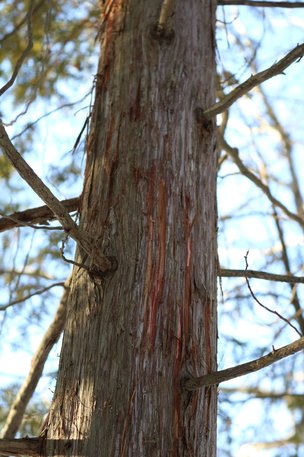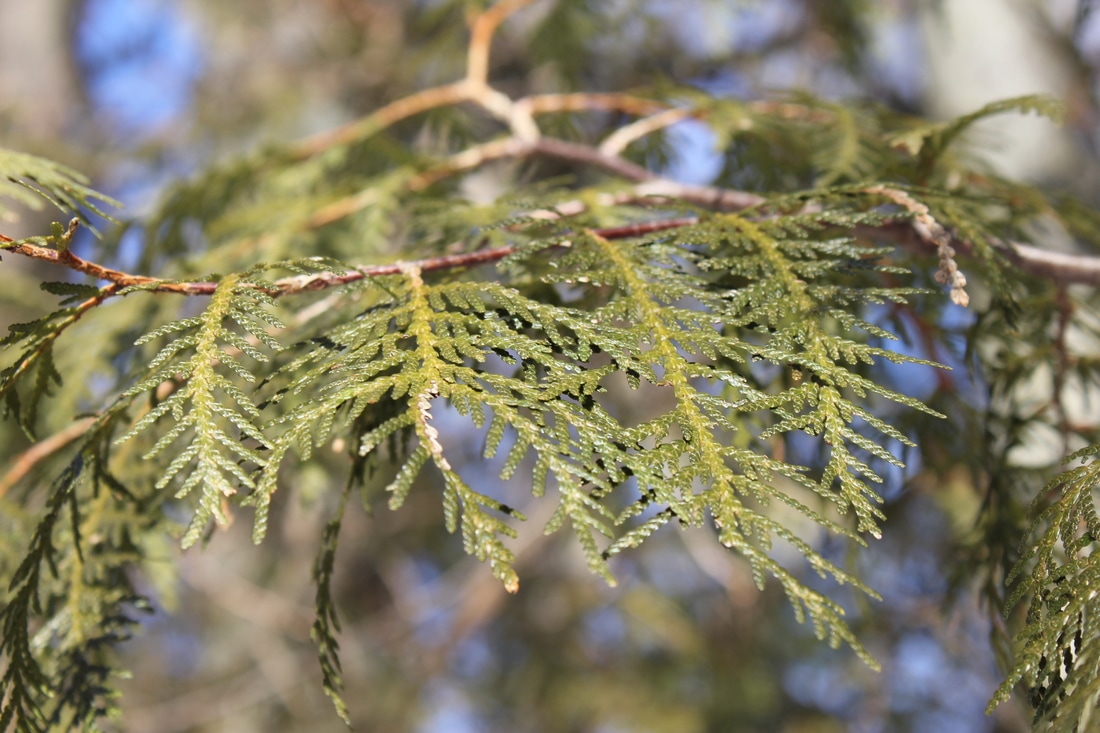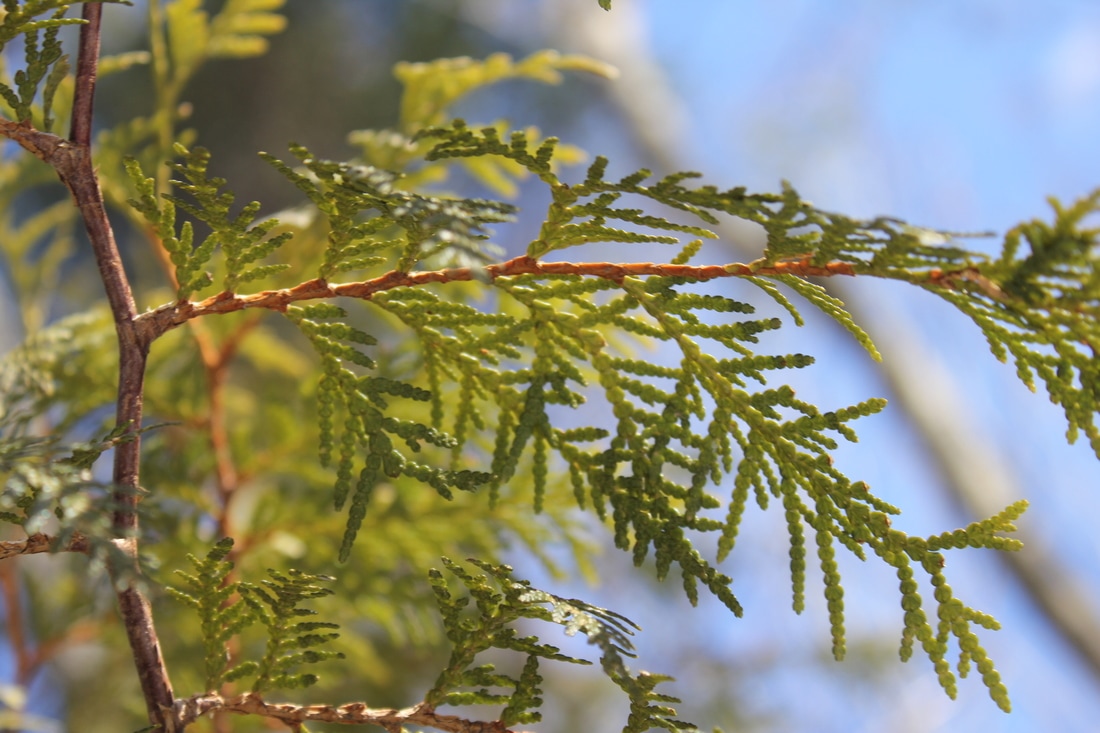
3 February 2017
Northern White Cedar
Thuja occidentalis L.
This evergreen conifer has small, flat scales for leaves and a distinctive bark with vertical stripes. Its cones are about a half inch long and occur in large numbers. The wood is soft, light, weather-resistant, and has a pleasing odor. It is a major source of food for white-tailed deer in the winter and you can often see browse sign on lower branches. The photo to the left shows marks along the trunk of a northern white cedar's bark which was probably made by deer hooves while the deer tried to reach food on higher branches. Deer tracks were in the snow beneath the tree.
Northern White Cedar
Thuja occidentalis L.
This evergreen conifer has small, flat scales for leaves and a distinctive bark with vertical stripes. Its cones are about a half inch long and occur in large numbers. The wood is soft, light, weather-resistant, and has a pleasing odor. It is a major source of food for white-tailed deer in the winter and you can often see browse sign on lower branches. The photo to the left shows marks along the trunk of a northern white cedar's bark which was probably made by deer hooves while the deer tried to reach food on higher branches. Deer tracks were in the snow beneath the tree.



